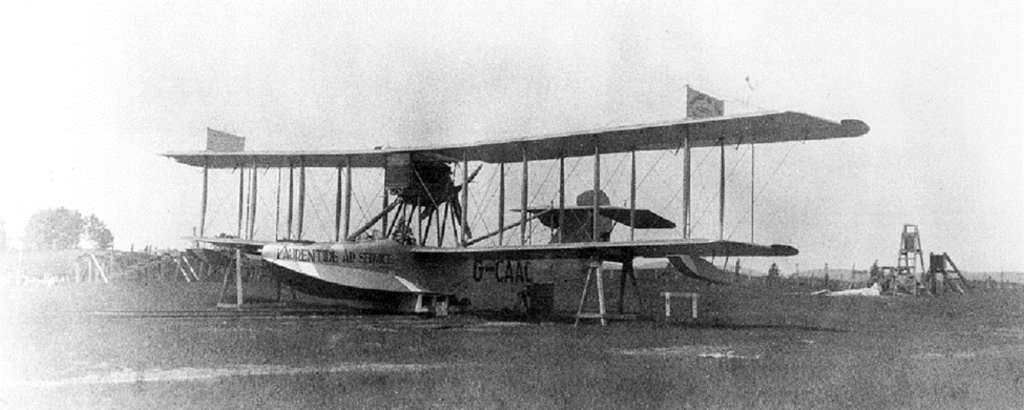
This is a story about the search for enemy submarines, forest fires that sent smoke rising on the horizon, and a plane crash in the early days of aviation in Ontario.
Jump in, and we’ll go for a flight!
~
René Brunelle Provincial Park and the La Vigilance Trail
René Brunelle Provincial Park sits on the eastern shores of Remi Lake in northeastern Ontario near the town of Moonbeam.
Remi Lake is big. Over 8 km long and more than 5 km wide.
It’s usually the focus of campers and day users when they visit the park. Boating and fishing on the lake are popular, as is visiting the park’s beaches, like Phipps Point.
It isn’t until visitors hike one of the trails that they learn that Remi Lake was a nationally significant hotspot for forest firefighting and bush plane activity more than a hundred years ago.
If you hike the La Vigilance Trail at Phipps Point, you’ll find a nice scenic trail and learn a bit about Remi Lake’s role in Ontario’s forest firefighting history. Interpretive signs along the trail tell the story of floatplanes and how they were used in the early days of forest fire prevention.

Airplane Island, which you can see from the trail, sits in the middle of Remi Lake and was a floatplane base during the 1920s.
The first floatplane stationed on Remi Lake was a Curtiss HS-2L called La Vigilance, and its job was to keep watch, spotting smoke and potential forest fires in the vast green landscape.
~
U-boat hunters
Curtiss HS-2Ls were “flying boat” aircrafts developed during World War I as submarine hunters.
The aircraft flew along the coast, looking for German U-boats beneath the surface and dropping bombs on them.
A dozen of these sea planes were eventually based in Nova Scotia towards the end of the war. Their job was to protect the vital port of Halifax and the convoys of ships that gathered there for the dangerous Atlantic crossing.

~
Firsts for Canada
These planes set many firsts in the country, including the first airmail service and the first regularly scheduled passenger service.
They also became the country’s first bush planes.
In 1919, the Laurentide Paper Company, later renamed the Laurentide Air Service in 1921, acquired two flying boats for forestry missions in northern Quebec.
These aircraft conducted the first aerial timber surveys and monitored forest fires, the first of which was spotted in 1919, proving themselves to be valuable to Canada’s logging industry.
Earlier that same year, one of the aircraft, designated G-CAAC, flew from Nova Scotia to Quebec in what was then the longest flight in Canadian history. It was piloted by Stuart Graham, accompanied by his wife, Madge, who became the first woman in Canada to complete a long-distance flight.
This aircraft was nicknamed La Vigilance.

La Vigilance and other HS-2Ls were critical for developing Canada’s north. Even after the First World War, northern regions were sparsely populated and had little infrastructure.
There were no runways, but plenty of lakes, and these types of aircraft were built to land and take off on the water. This required special skills and a strong will to deal with a harsh northern climate.
Luckily, Canadians returned from WWI with the skills needed for such tasks. This allowed them and their bush planes to penetrate where roads and rails hadn’t, becoming vital for northern communication, industry, transportation, aerial photography, map-making, and forest firefighting.
Suddenly, people could access the bush like never before because of these planes.
~
A fateful flight
La Vigilance was stationed at Remi Lake on Airplane Island in the 1920s. During a routine mission on September 2, 1922, the aircraft ran into bad weather and had to land on a small lake.
Knowing that takeoff from such a small lake would be difficult, pilot Don Foss and engineer Jack Caldwell unloaded as much cargo as possible. On takeoff, the pilot adjusted course, but one wing caught the lake’s surface, cartwheeling the plane and crashing it.
The two men survived and walked 20 km through the bush, eventually finding help.
A salvage mission that winter recovered the plane’s engine, but the rest of the aircraft was too badly damaged and remained in the lake. There it stayed — for more than forty years.

~
Rescue and restoration
Robert Bradford, curator of the National Aviation Museum in Ottawa, learned of La Vigilance and its importance to Canada’s aviation history. Determined, he set out to recover the aircraft.
In 1967 and 1968, the plane was retrieved from the lake — now called Foss Lake, named for Don Foss, the pilot of La Vigilance. It was painstakingly transported, piece by piece, to the Museum for preservation and restoration.
Using parts from other Curtiss HS-2L’s, La Vigilance was slowly remade throughout the 1970s and 1980s. The original hull was too damaged to be used in the restoration, so it has been preserved separately and now sits beside what is considered the world’s only complete Curtiss HS-2L: La Vigilance.

~
A place in Canadian history
As the first bush plane to fly in the country, and one of many in a long line of significant aircraft, it deserves its place in Canadian history.
La Vigilance is on display, along with its instruments, original pilot’s tool kit, and other artefacts, at the National Aviation Museum in Ottawa.

Planning a visit?
René Brunelle Provincial Park is a northern gem that lies just north of Highway 11 near Moonbeam and Kapuskasing.
The park is part of the Ontario Parks Boreal Driving Route, connecting a number of northern parks together for the ultimate northern road trip.
Canada’s first bush plane, La Vigilance, is one of over 130 aircraft and artefacts at the Canadian Aviation and Space Museum located in Ottawa, Ontario.


